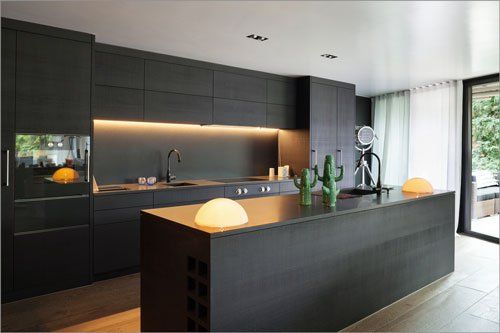WHAT YOU SHOULD KNOW ABOUT LAMINATED GLASS
- By Jovel Mico R. MERQUITA
- •
- 14 May, 2018
- •

At first glance, most glass appears basically the same. However, there are several types of manufactured glass, and despite appearances, each kind is fundamentally different than the others. One such category of glass is known as safety glass due to its inherent protective characteristics.
One type of safety glass, laminated glass, is in widespread use in a variety of environments, including residential, commercial, industrial and automotive settings. Below is more information about laminated glass, such as how it is made, specific applications, and considerations regarding use.
LAMINATED GLASS - COMPOSITION AND MANUFACTURE
Laminated glass consists of two or more ordinary glass layers joined together in a sandwich-style configuration. In between the glass layers lie thin, transparent layers of plastic that bind together the stack.
Laminated glass is made by stacking together all of the components, then exposing the materials to heat to form a perfect bond. Though most laminated glass contains two outer layers of glass and a single inner plastic layer, some laminated glass is configured differently.
For example, light-emitting diodes (LEDs) can be inserted inside the stack alongside a conductive inner layer and provide illumination functionality as a result. Another common example is bulletproof glass, which is formed by pressing together several layers of glass and inner layers to create a strong, impact-resistant surface.
LAMINATED GLASS - USES
Laminated glass is categorized as safety glass because of its ability to reduce breakage and lessen the possibility of injury to others. Specifically, laminated glass serves a protective role by keeping glass fragments together. The inner layers retain their bond with the outer glass pieces, so there is a much smaller chance of free-flying glass in an incident.
That is why laminated glass is used in automobile windshields. Direct blows to a laminated glass windshield, whether from the outside or inside of a vehicle, won't cause the glass to splinter into dangerous shards. In addition, the added strength created by layering can keep individuals from being thrown through windshields in an accident.
Laminated glass is also commonly found in other areas where safety and security are paramount. For example, laminated glass is often used for skylights, large storefront windows and other locations where falling glass could injure persons. The bonding layers serve to keep the glass intact and prevent it from plummeting and shattering in the presence of people.
LAMINATED GLASS - CONSIDERATIONS
While laminated glass is a great choice of glass in many circumstances, there are a few considerations to keep in mind before making a decision to use it. For example, laminated glass is more expensive to produce than plate or annealed glass, and its use will raise the cost of any project.
Of course, it is worthwhile to keep in mind that laminated glass is more resilient and should last longer than non-safety glass, thus offsetting some of the cost disadvantage in the long run. Depending on the specific application, laminated glass is likely to pay for itself by preventing the need to replace plate or annealed glass.
Another consideration to keep in mind is the importance of purchasing high-quality laminated glass. Poorly manufactured laminated glass suffers from multiple potential problems, including the possibility of delamination.
Delamination can occur when the materials used aren't properly protected from environmental contaminants during manufacture, thus weakening the bonds and allowing separation of the layers. If the edges of deficient laminated glass are exposed to moisture, this can also accelerate the process of delamination.
Another possible issue that can affect inferior laminated glass is visual distortion. As an example, defective laminated glass may be wavy and contribute to warped viewing as a result.
If you have questions about laminated glass or any other glass product, be sure to contact Metropolitan Glass Company for assistance. The professionals at Metropolitan Glass can answer your questions and provide expert installation services for any project.








